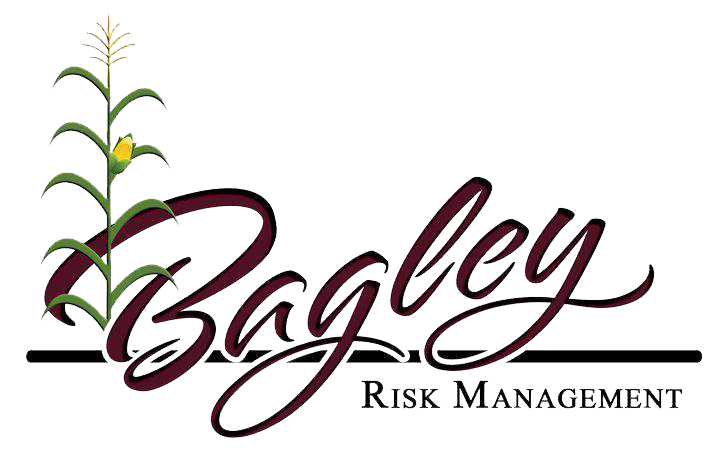The Bagley Risk Management Diaries
Table of ContentsAbout Bagley Risk ManagementNot known Details About Bagley Risk Management How Bagley Risk Management can Save You Time, Stress, and Money.What Does Bagley Risk Management Mean?The 3-Minute Rule for Bagley Risk Management10 Easy Facts About Bagley Risk Management Shown
When your contract reaches its end date, the final cost is computed making use of the CME Feeder Livestock Index. This is based upon sale barns throughout the Midwest (not simply your regional market). If the index falls listed below your contract's protection cost, you may be paid the difference. Rate Change Factors will apply.Livestock Risk Protection (LRP) is a USDA subsidized insurance coverage program that assists safeguard manufacturers from the threats that originate from market volatility. With LRP, producers are able to insure a flooring cost for their cattle and are paid an indemnity if the market value is less than the insured price.
This product is planned for. Cattle insurance.
Some Known Details About Bagley Risk Management

In the last pair of months, several of us at FVC and PCM have gotten concerns from manufacturers on which risk management tool, LRP vs. Futures, is better for a pork producer? Like many tools, the response depends upon your procedure's objectives and scenario. For this edition of the Dr.'s Corner, we will certainly examine the circumstances that often tend to favor the LRP device.
In Mike's analysis, he contrasted the LRP calculation versus the future's market close for every day of the past twenty years! The percent revealed for every month of the provided year in the first area of the table is the percent of days because month in which the LRP estimation is reduced than the futures close or to put it simply, the LRP would possibly indemnify greater than the futures market - https://worldcosplay.net/member/1717216. (National livestock insurance)
As an example, in January 2021, all the days of that month had LRP potentially paying more than the futures market. On the other hand, in September 2021, all the days of that month had the futures market potentially paying greater than LRP (zero days had LRP lower than futures close). The tendency that reveals itself from Mike's evaluation is that a SCE of a LRP has a greater probability of paying more versus futures in the months of December to Might while the futures market has a greater probability of paying more in the months of June to November.
The Definitive Guide for Bagley Risk Management

50 or $5. 00). As an instance, in 2019, LRP was far better or within a $1. 25 of the futures this hyperlink market over 90% of the days in all the months other than June and August. Table 2 depicts the average basis of the SCE LRP computations versus the future's close for the provided time frameworks annually.
Once again, this information supports a lot more probability of an SCE of a LRP being better than futures in December through May for many years. As a typical caution with all analysis, previous efficiency is NO assurance of future efficiency! It is critical that manufacturers have accounting procedures in place so they recognize their price of manufacturing and can better determine when to use risk management devices.
Some Known Details About Bagley Risk Management
Some on-farm feeders may be contemplating the demand for cost defense right now of year on calves preserved with the intent to feed them to a surface weight sometime in 2022, using offered feed resources. Regardless of strong fed cattle costs in the current regional market, feed prices and current feeder calf bone worths still produce limited feeding margins moving on.
The present ordinary auction cost for 500-600 extra pound steers in Nebraska is $176 per cwt. This recommends a break-even rate of $127. The June and August live cattle agreements on the CME are presently trading for $135.
Cattle-feeding business often tend to have tight margins, like numerous agricultural ventures, due to the competitive nature of business. Livestock feeders can bid much more for inputs when fed cattle costs climb. https://www.huntingnet.com/forum/members/bagleyriskmng.html?simple=1#aboutme. This increases the cost for feeder livestock, in certain, and somewhat enhances the rates for feed and other inputs
Top Guidelines Of Bagley Risk Management
Areas much from significant processing facilities tend to have an adverse basis. It is crucial to note that local results also influence basis worths for 500-600 extra pound guides in the autumn. As an example, Nebraska livestock are close to major processing centers. Consequently, basis declares or zero on fed cattle across much of the state.
Only in 2020 did the LRP insurance coverage cost surpass the ending value by sufficient to cover the costs expense. The internet impact of having this LRP coverage in 2019-20 was significant, adding $17. 88 per cwt. down line. The outcome is a favorable typical web result over all five years of $0.
37 The manufacturer costs decreases at reduced insurance coverage levels yet so does the insurance coverage cost. Since manufacturer premiums are so low at reduced coverage degrees, the manufacturer loss proportions (indemnity/premium) increase as the coverage level decreases.
Our Bagley Risk Management PDFs
In general, a producer needs to consider LRP protection as a mechanism to safeguard output cost and succeeding revenue margins from a risk administration viewpoint. Nonetheless, some producers make a case for insuring at the lower degrees of coverage by concentrating on the choice as a financial investment in risk administration defense.
